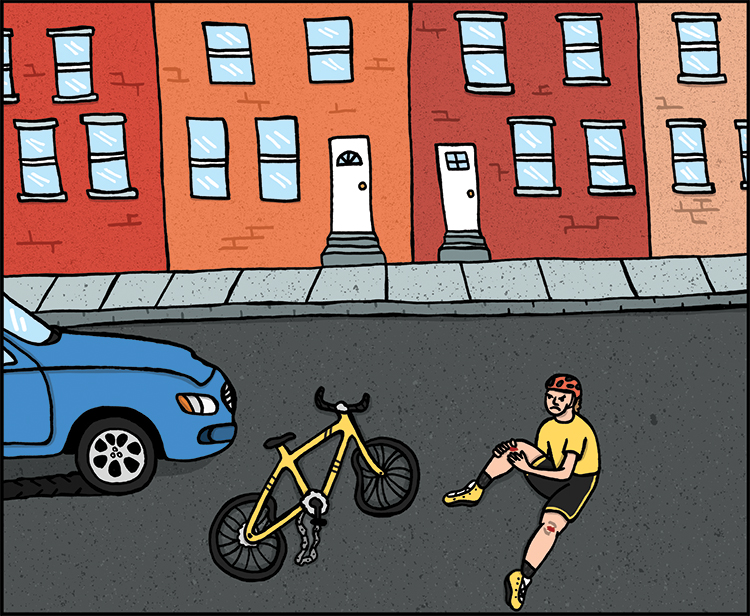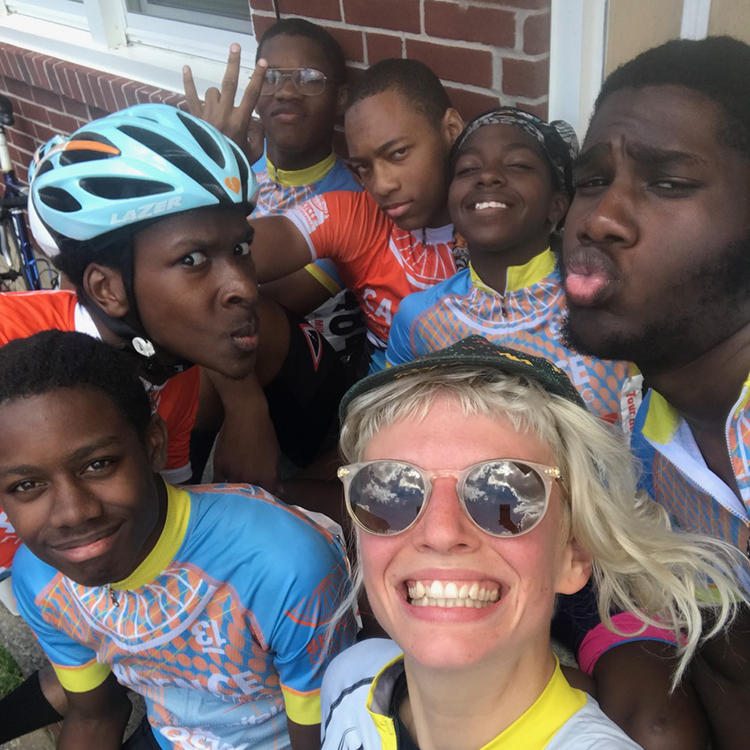Crash Course
In the last five years, the cycling community has seen 93 major injuries and 22 fatalities in Philadelphia County alone—bikers hit while turning corners or riding on the shoulders of cramped roads, even by inattentive drivers backing out of parking spaces. [Editor’s note: These numbers, gathered by PennDOT, report only the crashes in which a severe injury or fatality occurred.]
There’s no catchall for how to avoid bike crashes—especially in the citvy. But there are ways you can protect yourself, so this month, Grid talked to two Philadelphia bike-injury lawyers to get the best advice.
Insuring your Safety
Before you wheel your bike out onto the pavement, there’s something you need to know: your car insurance matters.
In Pennsylvania, bike accidents are covered by your auto insurance. According to Joseph Piscitello, of Piscitello Law, many people don’t realize that in the event of a bike crash, the first legal step bikers take is to open a claim with their car insurance company.
Pennsylvania bicycle accident injuries are covered by the insurance of the driver at fault for the accident. If no one is at fault, your medical bills will be covered by your own auto insurance.
“By law, your car insurance has to pay your medical bills,” he explains. “As a cyclist, one of the most important things you can do to make sure you protect yourself on a bike is to make sure you have a good car insurance policy.”
One of the most common mistakes people make, Piscitello says, is getting limited tort insurance—a type of policy that greatly reduces your ability to make a claim for your pain and suffering, although it will cover your medical bills.
Because your car insurance is responsible for you in the event of a crash, Piscitello recommends “full tort,” a policy that has your back even in the event a driver cuts you off and is never identified. He also advises that cyclists hold policies with “underinsurance” and “uninsurance” clauses, so that in the case where the at-fault driver is underinsured or uninsured, your insurance is liable for your treatment.
What to do if You Have an Accident
First things first: Get to the side of the road.
“Because people get hit again,” Piscitello says.
Next, call the police. And if you have a phone on you, take photographs of the scene— pictures of your injuries, the car that hit you and any damage to your bicycle. Then write down everything you can about the vehicle that struck you: license plate number, the vehicle model, the driver’s name and insurance information.
This is the type of information that will help you in case you have sustained serious injuries in the accident. According to Stuart Leon, of Bicycle Crash Law, 99 percent of bikers who get hurt in a crash and get identification are able to get the medical treatment that they need paid for. Not doing so is the No. 1 mistake bikers make.
“It’s not first nature to get information or identification from the [person driving the] vehicle that hits you,” Leon says. “That’s not what the people are thinking about. They’re thinking about survival and getting home.”
Another tip from Leon is to check for witnesses, especially if the driver didn’t stop. A full quarter of the cases he sees at his firm, he says, are hit and runs. If anyone else saw what happened, he advises you to get their names and phone numbers and ask them to send you a statement of what happened.
“There are usually a lot of random heroes, citizens, crime fighters, just good samaritans around,” he says.
If the motorist won’t wait for the police, get the license plate number, state of issue, and a description of the person driving the car. Then, when the police arrive, request an incident report so that you can settle the case with the driver’s insurance company. If you’ve been doored, ask the officer to cite the motorist for dooring.
“Be exceedingly respectful to the police officer,” Piscitello advises. “Because the police officer has some discretion in what he’s hearing and the amount of logic he or she employs in looking at the situation.”
Philadelphia police are not required to report to a crash where no injuries are reported and both vehicles can drive away. If you are not injured, and the police will not show up, you can fill out a crash report via phone or in person at a police station. As soon as you can, be sure to write down your own detailed description of the accident.
Both lawyers note that Pennsylvania laws significantly reduce the amount bikers pay for medical treatment after a crash, so bikers should not be intimidated by medical costs if they need treatment afterwards.
Getting Back on the Bike
Get an estimate for bike repairs from a bike shop. This is important for insurance and legal proceedings. Then, contact a lawyer.
You can also apply for consideration from the Emily Fredricks Memorial Fund, a local Philadelphia foundation, set up in collaboration with the Bicycle Coalition, that replaces bicycles that were damaged in a crash. The fund exists to honor the memory of Emily Fredricks, a 24-year-old pastry chef killed in a bicycle crash in November 2017. Beginning in January 2019, the Fredricks family will present the awardees.








I am a Project Based Learning student at Cheltenham High School. I was interested in reading this article to learn what a cyclist can do if they are injured in a bike accident. I was shocked to learn how many bike injuries and deaths that happen on a consistent basis. The statistics are staggering. Why is it that drivers continue to drive in the bike lane? Why are the police not enforcing the law that drivers cannot drive in the bike lane? I think that the police don’t believe that this is a top priority. This statistically has proven to be very dangerous for both the cyclist and the driver of the car. Certainly, the cyclist is more physically exposed to a high level of potential injury or fatality if they are hit by a car. If people driving cars see no one in the bike lane and they drive on the bike lane they do not believe they are doing anything wrong. Cyclists are not always visible to drivers and a major accident could happen if they don’t see the bike. I believe that the law needs to be enforced and that bike lanes possibly need to be more visible to the driver.
Thank you for the valuable information and keep up the good work.
Sincerely,
David Laverty